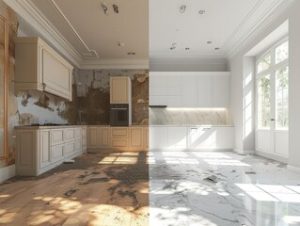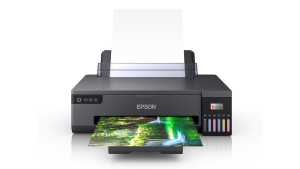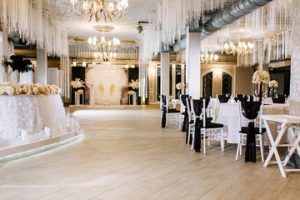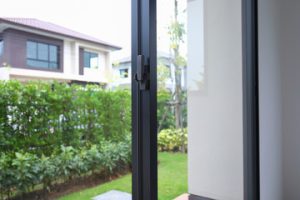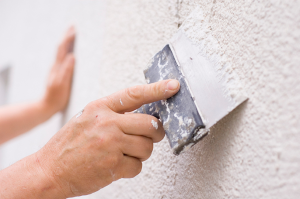Mold Remediation Provo is a process that reduces the amount of mold in your home or building. It involves containing the mold, cleaning and removing affected materials and air filtration to keep the mold at bay.
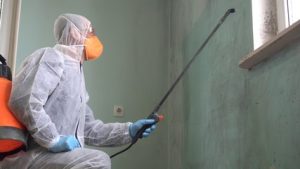
Remediators isolate contaminated areas with a plastic containment to prevent spores from spreading to other parts of the property. They also use negative air machines with HEPA filters to clean the air and trap airborne spores and other debris.
Mold remediation involves a number of different procedures, including inspection, testing, removal, demolition, sanitizing and containment. The process is highly regulated, and requires professional judgment to determine the best method for each situation. The type of material present and the size of the affected area determines what methods are used. Porous materials such as drywall and carpet require removal, while non-porous materials like metals and plastics can usually be cleaned and saved. Personal belongings require special attention, as they may not only be structurally compromised by the presence of mold but also have significant sentimental value.
In most cases, a professional restoration company will take items that can be saved and clean them offsite. This will allow the restoration company to use specialized cleaning methods to get your personal belongings back in pristine condition.
As part of the remediation process, all contaminated building materials must be removed, including drywall, carpeting, and insulation. This is a lengthy process that can be extremely expensive. In some cases, the damaged materials need to be replaced entirely. It’s important to find a company that has certifications from reputable organizations, a track record of experience and good customer reviews.
Remediation techniques must be carefully selected to prevent spores from becoming airborne, as this can cause respiratory issues for both occupants and remediators. Remediators should use PPE such as masks and gloves and follow stringent containment strategies. For example, sanding or wire brushing porous materials such as wallboard can stir up spores. Additionally, invasive actions such as stripping or peeling wallpaper can release large amounts of spores into the surrounding air.
Once the contaminated materials are removed, the space must be thoroughly cleaned and sanitized. Remediators will use a variety of cleaning solutions, including detergent solutions, to remove remaining mold growth. The space will then be wiped down and dried with fans, to ensure that all moisture is gone.
During this step, all windows and doors are closed between the affected area and other rooms of the house. Plastic sheeting is often used, and the area is sealed with duct tape to keep spores from entering other parts of the home. A HEPA vacuum cleaner is often used to ensure that all spores are killed and unable to return to the affected area.
Safety Precautions
When working with mold, there are many safety precautions that must be taken to ensure the health and well-being of building occupants. These measures include full containment, use of personal protective equipment, and following recommended cleaning and removal steps to minimize dust dispersal. The minimum level of PPE for this work is a filter face mask, disposable gloves, and eye protection.
Remediators must also protect themselves from spores by covering their skin with long-sleeved shirts, pants, and waterproof boots or shoes. These materials prevent mold spores from clinging to their clothes and then spreading throughout the building. In addition, the use of an air scrubber or HEPA vacuum helps to filter out these spores and reduce their spread.
The contaminated materials that are removed should be placed in impermeable plastic bags for disposal. It is important not to disturb the mold spores that are trapped in these materials, as they could potentially re-infest the building. This is why it is recommended that professionals use a decontamination room before and after entering the contaminated area.
Building staff must also avoid eating, drinking, or using cosmetics and tobacco products in areas where mold remediation is taking place. This prevents contamination of these items with mycotoxins, which can cause allergic and inflammatory reactions in some individuals.
It is also a good idea to avoid direct contact with moldy surfaces, as this can lead to dermatitis in sensitive individuals. Lastly, building occupants should not enter the moldy area unless they have been vaccinated against mycotoxins.
Once the mold is cleaned and the source of moisture has been identified and corrected, it is crucial to verify that the area is safe for reoccupation. This can be accomplished through visual inspections and air quality testing.
When choosing a professional mold remediation service, make sure to choose one with experience and a nationwide presence. Companies such as ServPro and Paul Davis are known for their thorough approach and comprehensive services, making them a great choice when dealing with a mold infestation. They can identify and address the root of the problem, such as hidden leaks, to prevent recurrence.
Materials
Mold remediation professionals use a variety of materials in the removal, cleaning and restoration process. These include rags, sponges, plastic sheeting and fans. In addition, special chemicals are used to kill mold and disinfect surfaces. Bleach-based chemicals that contain chlorine, for example, are effective mold killers. However, because they are oxidizers (they react with organic material), they break down quickly when they come into contact with it. They also can be harmful to living tissue, so they must be used with great care. Bleach-based chemicals are a good choice when the presence of organic material is suspected, such as on porous building materials like drywall or carpeting. Other chemicals that are used in mold remediation are antimicrobials, such as quats or phenols, which can be very effective against both fungus and microorganisms. These chemicals are also relatively inexpensive and noncorrosive.
Remediation workers should also wear protective clothing during the remediation process. Disposable paper overalls are recommended for small projects and full body suits are necessary for large or complex remediation jobs. Remediators should also wear a mask when working with bleach-based chemicals, since these can irritate the skin and nose. A respirator with a high-efficiency particulate air filter is also essential for reducing the number of airborne spores during a remediation project.
The first step in any mold remediation process is identifying and fixing the source of moisture that is fueling the growth. Once this is done, building materials that have been affected by mold can be cleaned and dried. The remediation company may use dehumidifiers, fans and other methods to speed up the drying process.
Once all building materials have been treated and dried, a detailed inspection and cleaning of the area is conducted. Then, the mold spores that were not removed during the cleaning process are collected by a HEPA vacuum cleaner and are placed in sealed containers for disposal.
While mold removal companies can be successful by simply removing the visible signs of mold, they are often unable to fix the underlying issues that cause it to return. Unless these are addressed, the mold will grow back, and the customers will likely complain. Mold remediation, on the other hand, is a much more detailed and reliable process that addresses both surface mold and underlying moisture problems.
Air Quality Testing
Air quality testing is a crucial tool for determining the extent of an indoor mold problem. It involves capturing and analyzing spore counts, culture results, and colony-forming units. It also identifies the types of mold present, and can aid in assessing human exposure. It is typically a better option than bulk or surface sampling.
In order to perform a thorough test, experts isolate the area and use barriers like plastic sheeting to prevent mold spores from spreading outside of the containment zone. This is especially important when working in areas with large amounts of contamination or those with a significant water issue. In addition, filtration devices are often used to control the movement of airborne spores during the remediation process.
A thorough assessment will help determine the severity of the mold infestation, including its spread and impact on the property’s materials and structural integrity. It will also include identifying any potential health risks and addressing the source of moisture that contributed to the growth of the mold.
When evaluating an air quality problem, it is important to note that mold spore concentrations can vary based on the life cycle of the mold, atmospheric and environmental conditions, and the amount of ventilation. This is why it is essential to conduct a comprehensive assessment using multiple testing methods, including specialized air samples.
Air tests can identify only a portion of the molds present in a sample because they only measure living organisms, not dead ones. In addition, they don’t tell the whole story of exposures to molds since a variety of other substances commonly found in damp or water-damaged environments can cause or contribute to complaints in occupants.
Air sampling provides a more accurate picture of mold contaminant levels in an indoor environment than relying on spore counts or colony-forming unit analysis alone. However, it’s important to note that a positive result for mold doesn’t necessarily mean that the underlying health concerns will be resolved. To do so, the underlying condition must be addressed and the building must be dried completely. Depending on the severity of the problem, this may require substantial repairs or even complete demolition.
